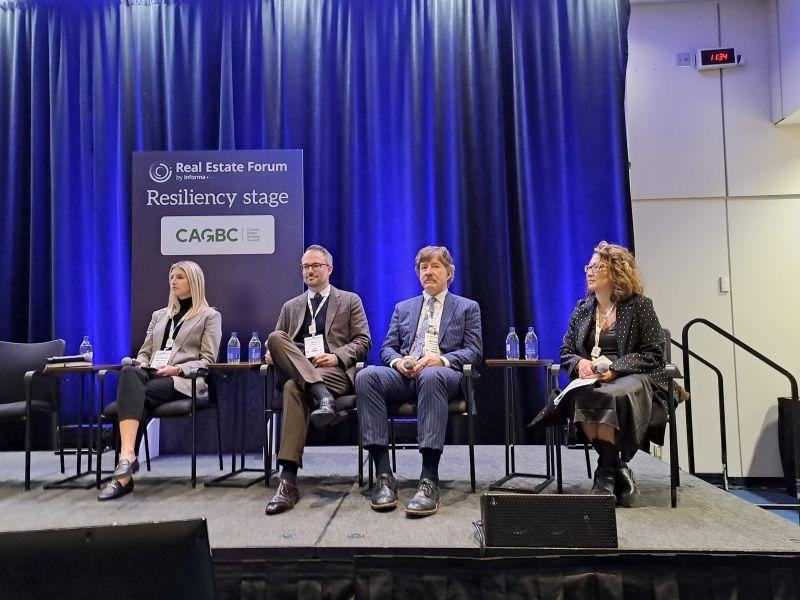
The Canadian Standards Association (CSA) Group is urging Canadian governments to establish equitable policies for electric vehicle (EV) charging as the country marches toward a 100 per cent zero-emission vehicle sales edict for all light-duty passenger vehicles by 2035.
Those policies would include providing support and infrastructure to the almost one-third of Canadians who live in multi-unit residential buildings (MURBs), incorporating accessible design, providing alternative payment options and increasing charger reliability.
The report – Charging Ahead: Ensuring Equity and Reliability in Canada's Electric Vehicle Network – was published by the CSA’s new Public Policy Centre which launched at the end of September.
“Looking into this space, there's obviously a lot of commitment, a lot of appetite in this space, and a lot of funding available to make this transition happen, specifically in the deployment of charging infrastructure,” said Jordann Thirgood, author of the report and manager of public policy at the centre.
“But we wanted to call attention to some of the foundational considerations around equity and reliability, to make sure that when we're moving forward through this transition to a low-carbon economy it is equitable, and is benefiting all Canadians, and not having anyone fall behind in that.”
Research on the report began in the summer, prior to the centre’s formal launch.
The CSA Group, founded in 1919 and headquartered in Toronto, develops standards for Canada and the U.S. in 12 areas. It has published over 3,000 codes and standards since its inception.
Concerns about home charging accessibility
The majority of EV drivers charge their vehicles at home. There are questions surrounding home charging accessibility based on whether the driver has dedicated parking in a single family home, rents in an apartment or has no access to parking.
“So starting at that equitable access perspective to make sure people can actually find charging, if not in their home then ideally within a kilometre, seems to be the sweet spot that we can also help facilitate that adoption and wider transition,” Thirgood said.
The report states if the federal government’s Zero Emission Vehicle Infrastructure Program were to be expanded or include a separate stream of funding to support comprehensive EV-ready retrofits, it could significantly improve uptake among MURB property owners.
It also recommends the government earmark dedicated funds for underserved areas, citing the EV Make-Ready Program from the New York Joint Utilities, which set aside US$206 million of its US$701-million program to directly benefit disadvantaged communities.
“Rather than building a large majority of the infrastructure in areas where there is existing demand right now, which is kind of a natural tendency,” Thirgood said, “(instead) taking a step back and thinking about where we can more strategically place those publicly accessible charging infrastructure pieces, so that they can actually induce demand.”
Thirgood noted drivers who require wheelchairs for mobility have also undertaken advocacy on charging barriers.
In terms of reliability, the report recommends the government institute minimum uptimes. Uptime is the percentage of time over a calendar year that charging services are available or in-use.
Finally, it recommends creating more equitable payment options. Most chargers use an app, often with a subscription.
“While that's convenient, it's a bit of a patchwork right now. So you might have to download multiple apps, pay multiple subscriptions,” Thirgood said, citing California’s recent mandate that the EV industry adopt universal payment options.
Future recommendations for EV infrastructure
There is plenty of work to be done building EV infrastructure leading up to 2035. Much of that involves collecting data – likely via government-led initiatives – to determine the best course of action, particularly around uptime and downtime.
“When it comes to the actual charging infrastructure itself, we don't really have a clear sense of what that looks like at the national level in terms of uptime versus downtime,” Thirgood said. “That's one of our recommendations, is to begin to explore the root causes of what is actually causing downtime. What are some of these either hardware or software or technological challenges that are leading to downtime?”
The U.S. Department of Transportation has laid out a minimum 97 per cent uptime.
The CSA is engaged in conversations with policymakers and figures in the EV industry to highlight the report’s recommendations.
Thirgood is also open to iterative versions of the report, or ones that focus on different areas within EV the charging sector.
“I think there's a lot of things that need to be considered, not just in what this report focuses on,” she said. “You have light-duty passenger vehicles, but also looking at medium and heavy duty in fleets and public transit. There's a whole raft of topics that I think are relevant and of interest for people right now.”










